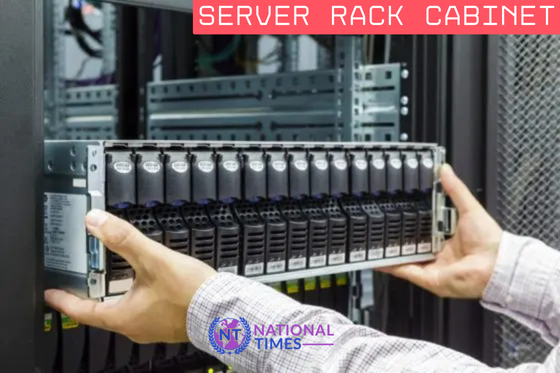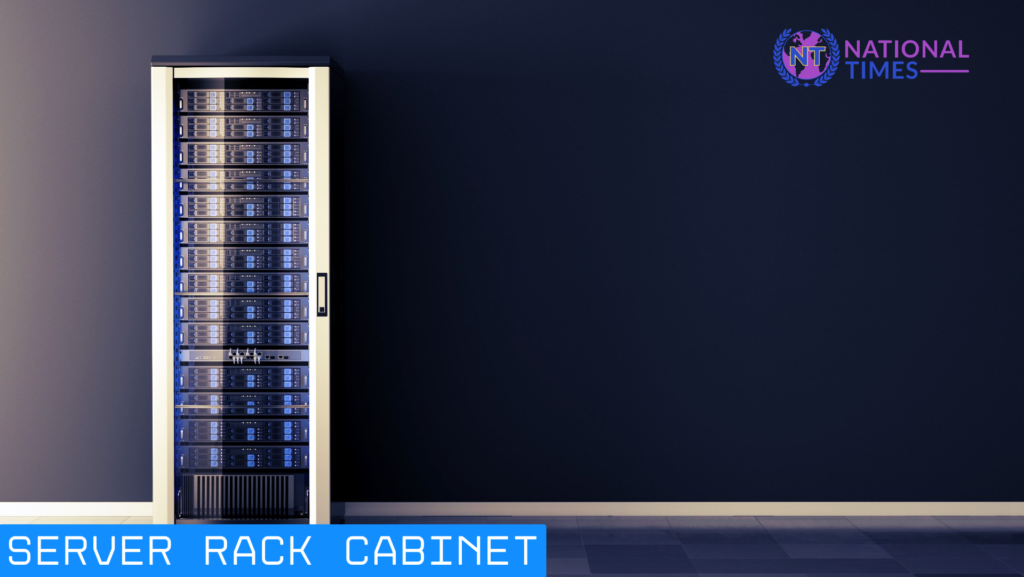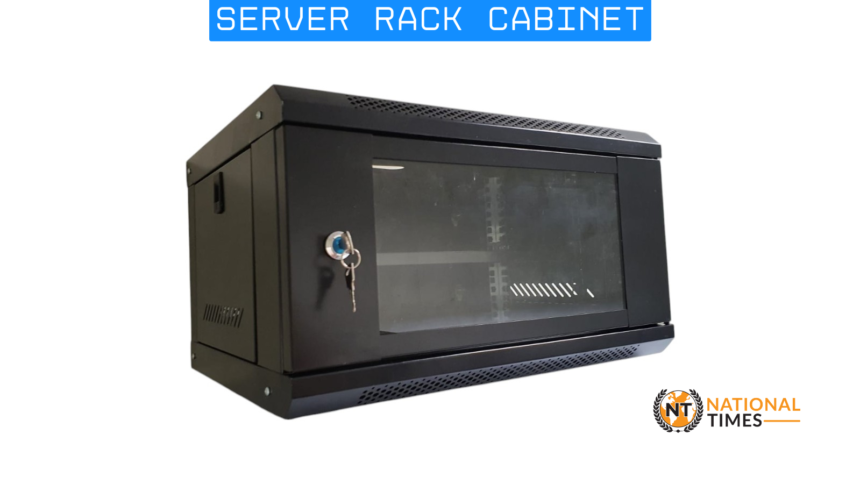Server rack cabinets are essential for managing and organizing server equipment in businesses and data centers. In this guide, we’ll explain what server rack cabinet are, why they are important, and how to choose, set up, and maintain them. Whether you’re setting up a small server room or managing a large data center, understanding server rack cabinets is key to keeping your equipment secure and organized.
What Are Server Rack Cabinets?
Server rack cabinets are structured enclosures used to house and organize servers, networking equipment, and other IT hardware. These cabinets are designed to hold equipment on standardized racks, ensuring it remains secure and easy to access. Typically made from metal, they provide a safe environment for servers, helping with airflow, cable management, and overall space efficiency.
The standard size for server rack cabinet is typically 19 inches wide, which is the universal size for rack-mounted servers. Inside, these cabinets offer space for various devices like servers, routers, switches, and UPS (uninterruptible power supply) systems. The equipment is installed vertically, maximizing space and allowing for efficient cooling and maintenance.
Why Are Server Rack Cabinets Important?
Server rack cabinets are essential for businesses and organizations that rely on technology infrastructure. Without proper storage and organization, IT equipment can become disorganized, leading to operational inefficiencies, overheating, and potential damage. Rack cabinets help address these issues by providing a structured environment for your IT hardware.
Here are a few key reasons why server rack cabinets are important:
- Organization: Rack cabinets allow for efficient organization of servers and networking equipment. With each piece of equipment having its designated space, it becomes easier to manage, maintain, and scale your infrastructure.
- Cooling: Proper airflow is crucial for keeping servers cool. Server rack cabinets are designed to enhance airflow around equipment, reducing the risk of overheating.
- Security: With enclosed options, server rack cabinets offer physical security. These cabinets often have lockable doors to protect equipment from unauthorized access.
- Space Efficiency: By mounting servers vertically in a rack system, you maximize your available floor space, which is especially useful in environments with limited room.
Types of Server Rack Cabinets
There are several types of server rack cabinets to consider depending on your needs. The most common types include open-frame racks, enclosed cabinets, and wall-mounted racks. Each type has its own advantages, so it’s important to choose the right one based on your available space, equipment, and security requirements.

Open-Frame Racks
Open-frame racks are simple, basic racks that don’t have any enclosure or walls. These racks are ideal for environments where equipment needs to be accessed frequently and where cooling is not a concern. Open-frame racks offer easy accessibility to servers, making them a good choice for small server rooms or for businesses that prioritize convenience over security.
Enclosed Cabinets
Enclosed cabinets are fully enclosed with walls and doors, offering enhanced security and protection for your servers and equipment. They are ideal for businesses where physical security is important, such as data centers or offices with restricted access. Enclosed cabinets also provide better airflow management and are often equipped with cooling systems, which help to maintain the optimal temperature for your equipment.
Wall-Mounted Racks
Wall-mounted racks are a space-saving option for smaller setups. These racks are mounted on the wall, which helps free up floor space. They are perfect for situations where you have limited space or need to organize smaller server setups. Wall-mounted racks are commonly used in home offices, small businesses, or satellite offices where space efficiency is a priority.
Here’s a bio table for Server Rack Cabinet:
| Attribute | Description |
|---|---|
| Product Name | Server Rack Cabinet |
| Purpose | Organize and house server equipment, networking devices, and IT hardware securely. |
| Material | Typically made from durable metal such as steel. |
| Standard Size | 19 inches wide (rack mount standard) |
| Types | Open-frame racks, enclosed cabinets, wall-mounted racks. |
| Capacity | Measured in Rack Units (RU), typically ranging from 12U to 48U or more. |
| Cooling Features | Some models include built-in cooling systems like fans or vents. |
| Security | Enclosed cabinets with lockable doors for enhanced physical security. |
| Mounting Options | Floor-standing or wall-mounted configurations. |
| Cable Management | Equipped with cable trays, ties, and management options to prevent clutter. |
| Weight Capacity | Varies based on design, typically up to 1500 lbs or more. |
| Common Uses | Data centers, server rooms, network operations, small office setups. |
| Maintenance | Regular cleaning, temperature monitoring, and equipment checks are essential. |
| Brand Examples | APC, Tripp Lite, StarTech, and ServerTech. |
This bio table provides a brief, comprehensive overview of server rack cabinets. Let me know if you need additional details!
Choosing the Right Server Rack Cabinet
Selecting the right server rack cabinet is crucial for the performance and longevity of your equipment. The choice depends on several factors, including the amount of equipment you need to store, the level of security required, and your available space.
When choosing a server rack cabinet, consider the following:
- Size and Capacity: Ensure the cabinet can fit all your equipment. Rack units (RU) are used to measure the vertical space available in a server rack, so know the height of your servers and other equipment to choose a cabinet that offers sufficient room.
- Cooling Options: If your equipment. Generates a lot of heat. Consider a cabinet with built-in cooling or the ability to add cooling systems like fans or air conditioning.
- Accessibility and Security: If security is a concern. Opt for an enclosed cabinet with lockable doors. Open-frame racks. Are more accessible but offer less protection.
- Cable Management: A good server rack cabinet should have adequate cable management features to keep cables organized and prevent tangling or damage.
Setting Up Your Server Rack Cabinet
Setting up a server rack cabinet involves carefully placing your equipment in the rack, securing it, and ensuring that all cables are neatly organized. Here are some important. Steps to follow. hen setting up your server rack:
- Install Rack Rails: Most server equipment needs to be mounted on rails that fit into the rack. These rails allow your equipment to slide in and out for easy access.
- Mount Your Equipment: Start by mounting your heaviest equipment at the bottom of the rack and the lighter equipment at the top. This will help with stability and ensure that the rack doesn’t tip over.
- Organize Cables: Use cable management trays or ties to keep cables organized and prevent them from interfering with airflow. Poor cable management can lead to overheating and is a safety hazard.
- Ensure Proper Airflow: Make sure that there is enough space around each piece of equipment for air to flow freely. Overcrowding the rack can lead to overheating and decreased performance.
Maintaining Your Server Rack Cabinet
Proper maintenance of your server rack cabinet ensures that your equipment continues to run efficiently and lasts longer. Here are some key maintenance tasks:

Cleaning the Cabinet
Checking Equipment
Regularly inspect your equipment to ensure that everything is functioning properly. Check for signs of wear and tear, overheating, or equipment failure. Performing routine checks can help prevent unexpected downtime.
Monitoring Temperature
Heat is one of the biggest enemies of server equipment. Make sure your server rack cabinet has a temperature monitoring system in place, and check the temperature regularly. If the. Temperature. Is too high, you may need to add additional cooling or upgrade your existing cooling system.
Common Mistakes to Avoid
When. Setting. Up and maintaining. A server rack cabinet. It’s easy to make mistakes. One common error is overcrowding the rack. This can block airflow and cause equipment to overheat. Always ensure that there is sufficient space between equipment for proper ventilation.
Another. Mistake. Is poor cable management. Disorganized cables can make. It difficult to troubleshoot. Issues, and they. Can. Also. Block airflow. Leading to overheating. Invest in proper cable management tools to keep everything neat and accessible.
The Bottom Line
Server rack cabinets are essential for organizing and protecting your IT equipment. They help maximize space, improve security, and ensure efficient cooling. Choosing the right cabinet, setting it up properly, and maintaining it regularly will ensure that your servers continue to run smoothly for years to come. By understanding the different types of cabinets, how to choose the right one, and how to keep it in top condition, you can create an organized and efficient server environment.






